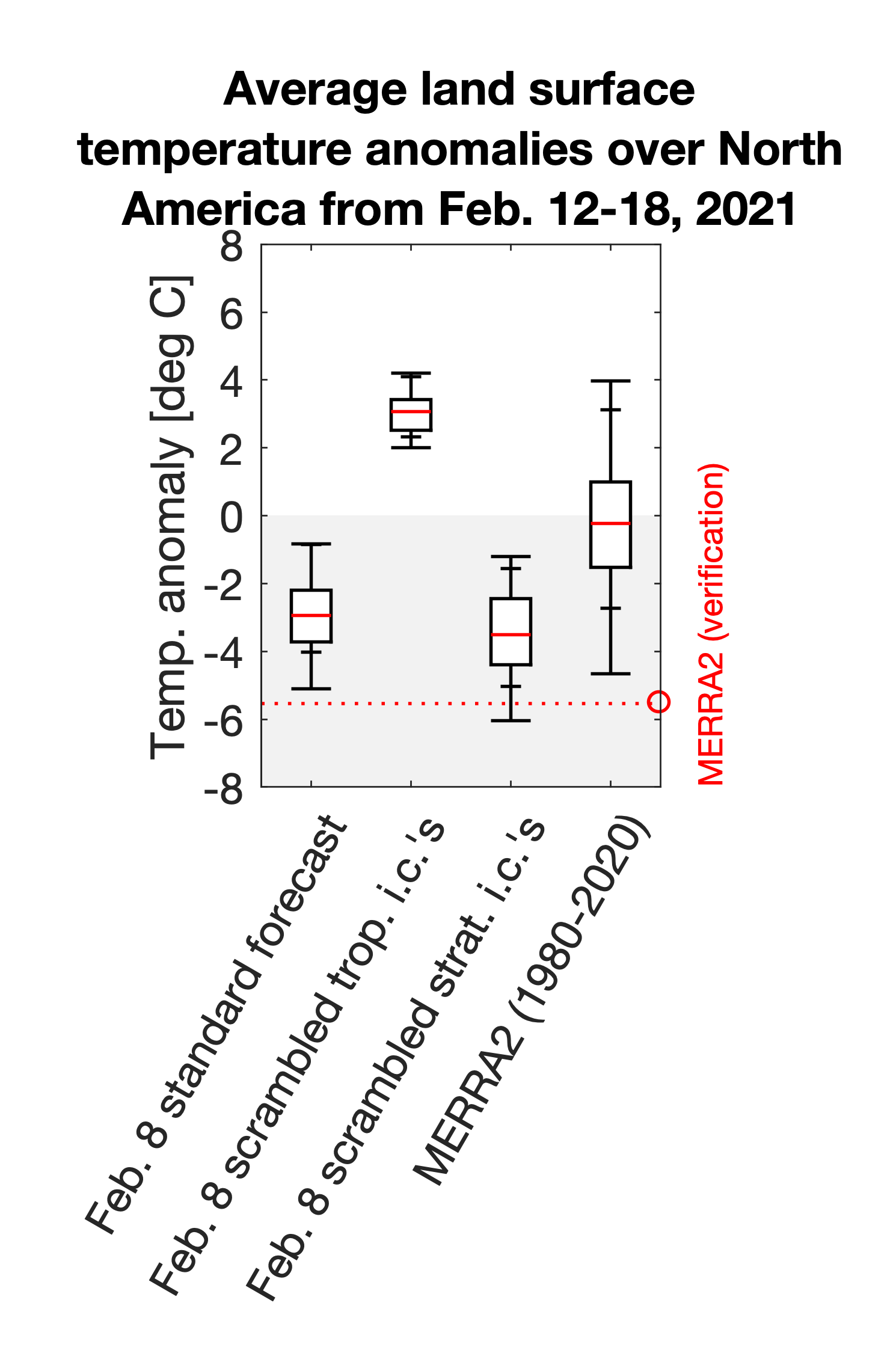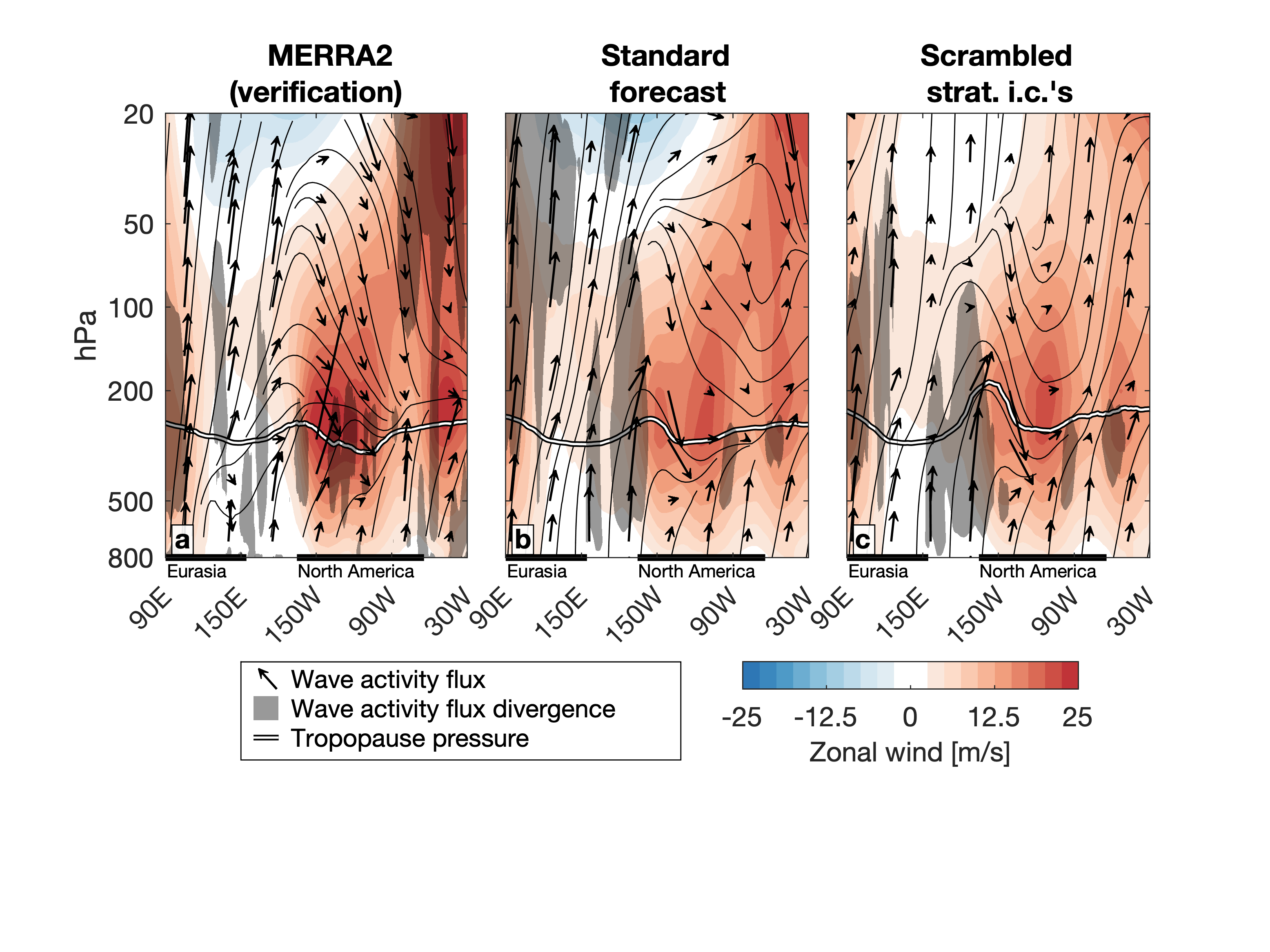The Surface Impacts of the January 2021 Sudden Stratospheric Warming
Was the February 2021 cold air outbreak in the United States that caused hundreds billions of dollars in infrastructure damage caused by the January 5, 2021 sudden stratospheric warming and a stretched polar vortex?
NCAR develops and maintains a real-time subseasonal prediction system based on the Community Earth System Model Version 2, Whole Atmosphere Community Climate Model Version 6 (CESM2(WACCM6)). The model spins up the atmosphere, ocean, and land initial conditions by nudging the atmosphere toward a near-real-time reanalysis, and then generates 21-member ensemble forecasts. However, by nudging only the troposphere, the stratospheric initial conditions drift, or become “scrambled”, relative to their observed state, and vice versa. These initial condition scrambling experiments can directly assess the role of the stratosphere in the extreme cold.

The standard forecast predicted near-record cold for North America, comparable to the second-coldest period in the modern era. When the initial conditions for the stratosphere are scrambled, the forecast is unchanged, but when the initial conditions for the troposphere are scrambled, the forecast predicts extreme warmth. This means that the stratospheric circulation did not drive the extreme cold. The reason is that the wave fluxes - that were hypothesized to have driven the extreme cold - traveled up to the stratosphere from Eurasia and were reflected back down toward North America never reached the troposphere, dissipating throughout the lower stratosphere. While the research did show that the stratosphere was overall important for sustaining weather patterns for nearly seven weeks after the sudden stratospheric warming, it suggests that the action of a disturbed polar vortex may be more of a feedback on surface weather, rather than a direct driver.

Publications
Richter, J. H., Glanville, A. A., Edwards, J., Kauffman, B., Davis, N. A., Jaye, A., Kim, H., Pedatella, N. M., Sun, L., Berner, J., Kim, W. M., Yeager, S. G., Danabasoglu, G., Caron, J. M., and Oleson, K. W., Subseasonal Earth system prediction with CESM2, Weather and Forecasting, revised.
Davis, N. A., Richter, J. H., Glanville, A. A., Edwards, J., LaJoie, E., Limited surface impacts of the January 2021 sudden stratospheric warming, Nature Comm., accepted.